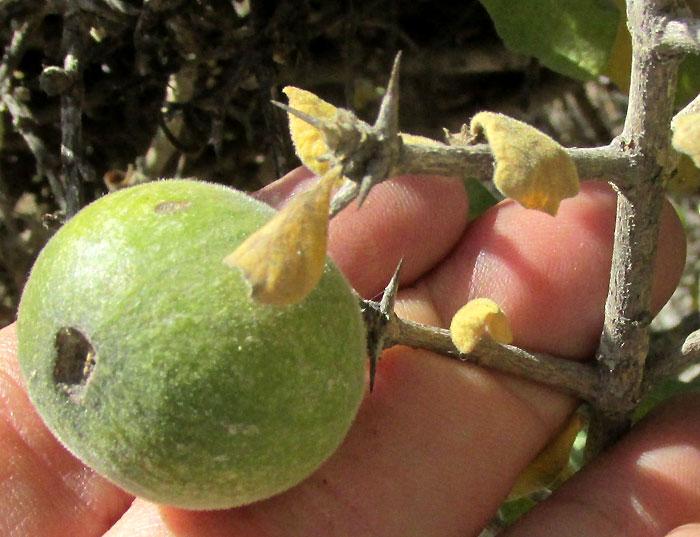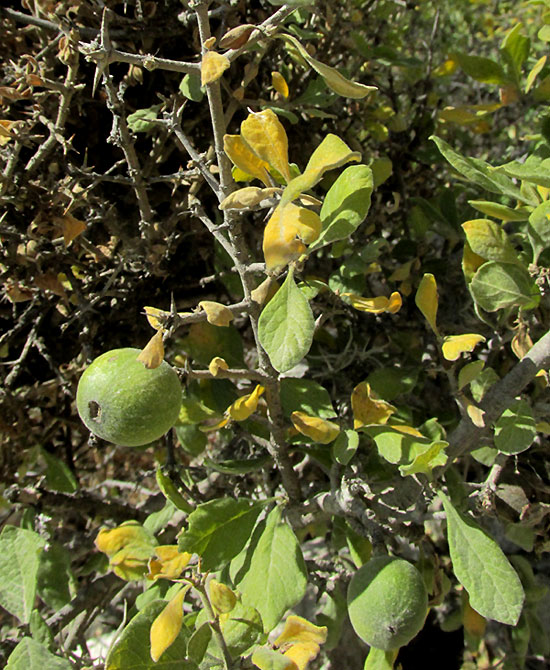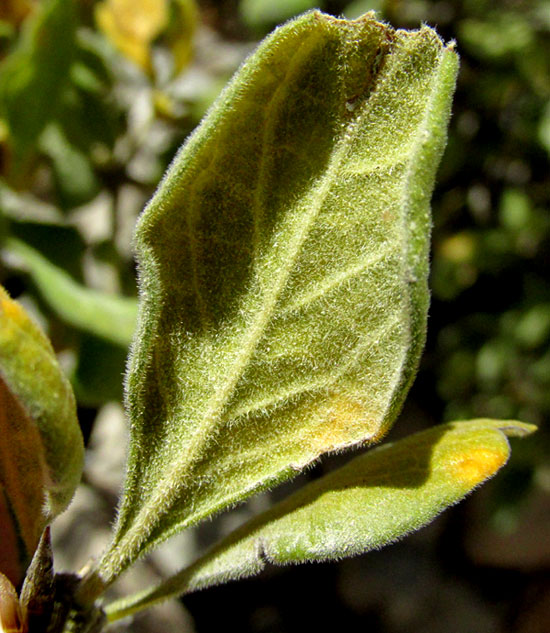Excerpts from Jim Conrad's
Naturalist Newsletter
entry from field notes dated January 17, 2023, taken on trail up the southeast-facing slope of Peña de Bernal on the northwestern side of Bernal, elevation ±2,220m (7280 ft); bedrock of intrusive, igneous dacite rock, similar to granite; Querétaro state, MÉXICO, (N20.748°, W99.949°)
RANDIA THURBERI

The dry season being exceptionally rainless, with the previous rainy season never quite developing, vegetation along the steep trail up Peña de Bernal's scrubby slope was crispy dry, and most leaves still hanging on tended to be limp and fading. Still, there was botany to be done, as with the above apple-like fruit attached to a small tree's very spiny stems. Here's what the fruit looked like amid the thorny maze formed by the little tree's interlocking stems:

The hard, dry, spherical fruits at the tips of spine-like branches, which themselves bore spines, with the branches and spines all jutting out from one another at approximations of right angles, presented a striking display, one not easy to forget. In fact, I'd seen such an arrangement before, for example on a semi-clambering tree back in the Yucatan, Randia longiloba.
Seeing that this was another Randia species, I made sure to gather any more details I could about this species, because Randia is a fair-sized genus with numerous look-alike species. It's home to over 100 species distributed in the Americas, with Mexico as its center of diversity, hosting about 62 species. Besides the mature fruit's size ~35mm across (1⅓ inch), the plant was hairy with dense, white, very short hairs:

The few details outlined above were enough to identity our plant as RANDIA THURBERI, fairly commonly distributed from dry parts of northwestern Mexico south mostly along the Pacific slope but including upland central Mexico, south into Costa Rica. Like other species of the genus Randia, it bears no consistently used English name, but in Spanish has several, often relating to the stems' and thorns' right-angle branching. To the Latin mind naturally the right angles evoke The Cross, summoning such names as Crucito, Crucillo and the like. The showy flowers are pure white.
The Flora de Guerrero says that the fruits are medicinal and edible, though no mention is made of what cures they bring about, or how one eats such a hard, dry fruit, which turns black at maturity.